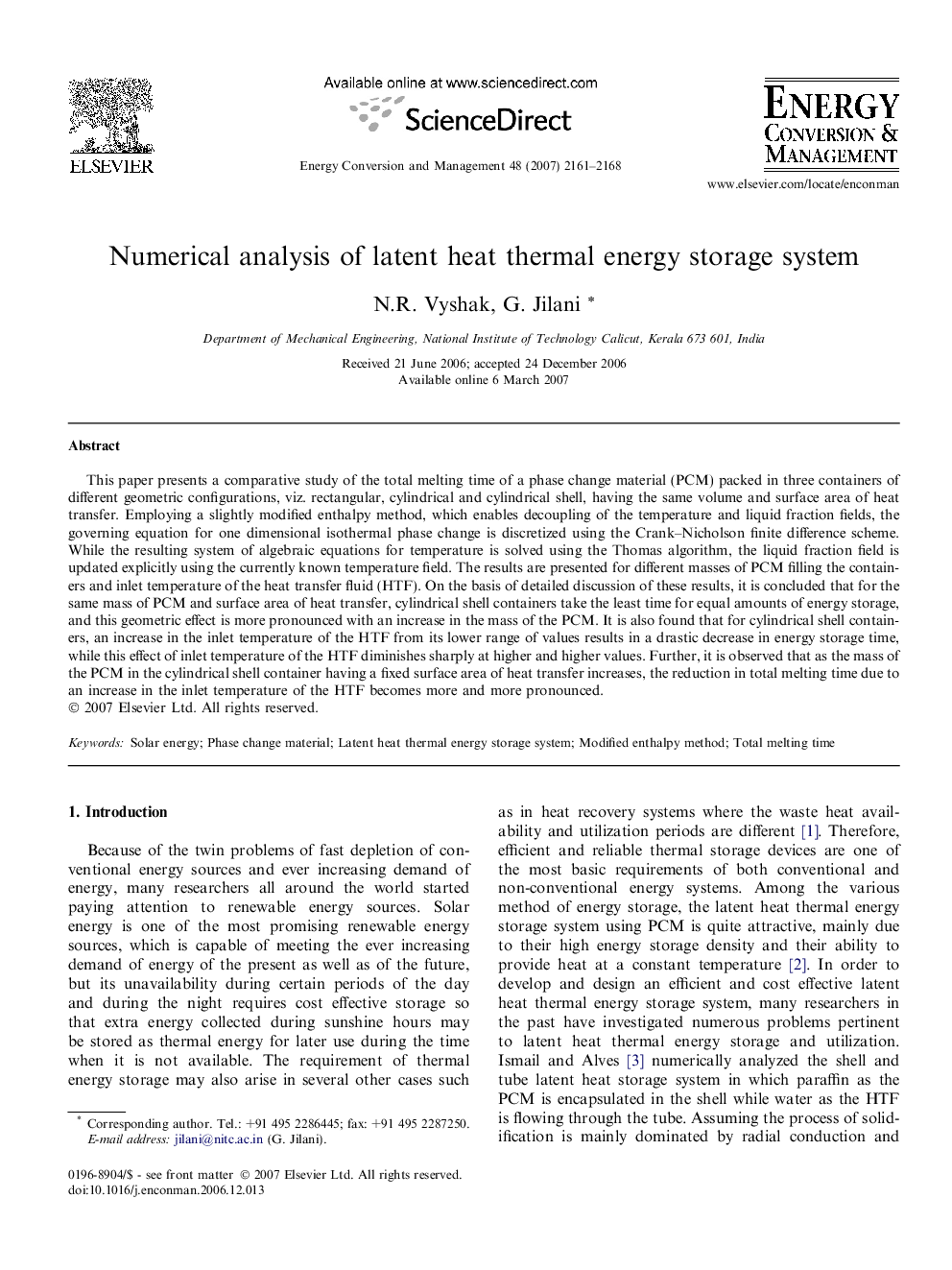| Article ID | Journal | Published Year | Pages | File Type |
|---|---|---|---|---|
| 772988 | Energy Conversion and Management | 2007 | 8 Pages |
This paper presents a comparative study of the total melting time of a phase change material (PCM) packed in three containers of different geometric configurations, viz. rectangular, cylindrical and cylindrical shell, having the same volume and surface area of heat transfer. Employing a slightly modified enthalpy method, which enables decoupling of the temperature and liquid fraction fields, the governing equation for one dimensional isothermal phase change is discretized using the Crank–Nicholson finite difference scheme. While the resulting system of algebraic equations for temperature is solved using the Thomas algorithm, the liquid fraction field is updated explicitly using the currently known temperature field. The results are presented for different masses of PCM filling the containers and inlet temperature of the heat transfer fluid (HTF). On the basis of detailed discussion of these results, it is concluded that for the same mass of PCM and surface area of heat transfer, cylindrical shell containers take the least time for equal amounts of energy storage, and this geometric effect is more pronounced with an increase in the mass of the PCM. It is also found that for cylindrical shell containers, an increase in the inlet temperature of the HTF from its lower range of values results in a drastic decrease in energy storage time, while this effect of inlet temperature of the HTF diminishes sharply at higher and higher values. Further, it is observed that as the mass of the PCM in the cylindrical shell container having a fixed surface area of heat transfer increases, the reduction in total melting time due to an increase in the inlet temperature of the HTF becomes more and more pronounced.
